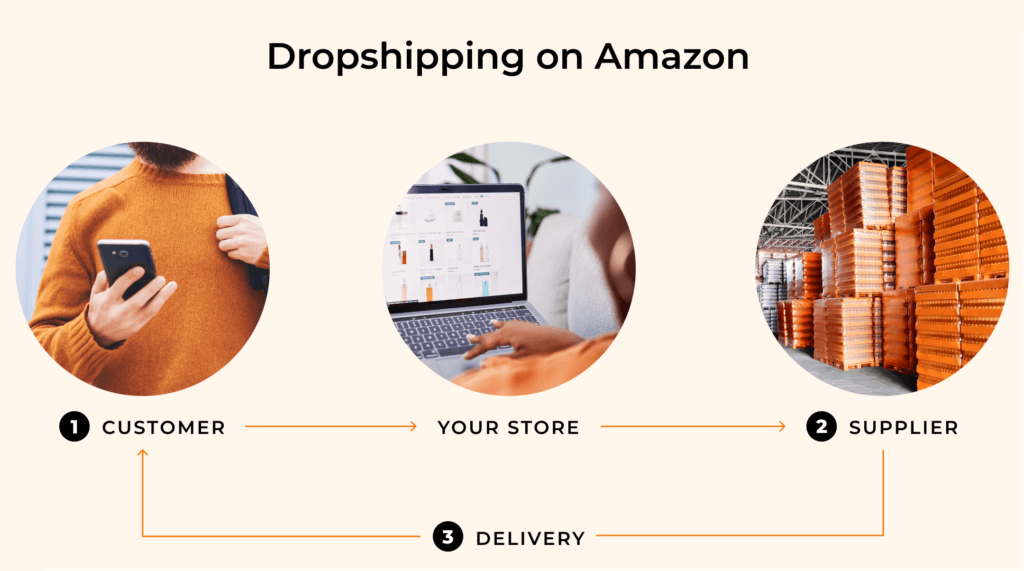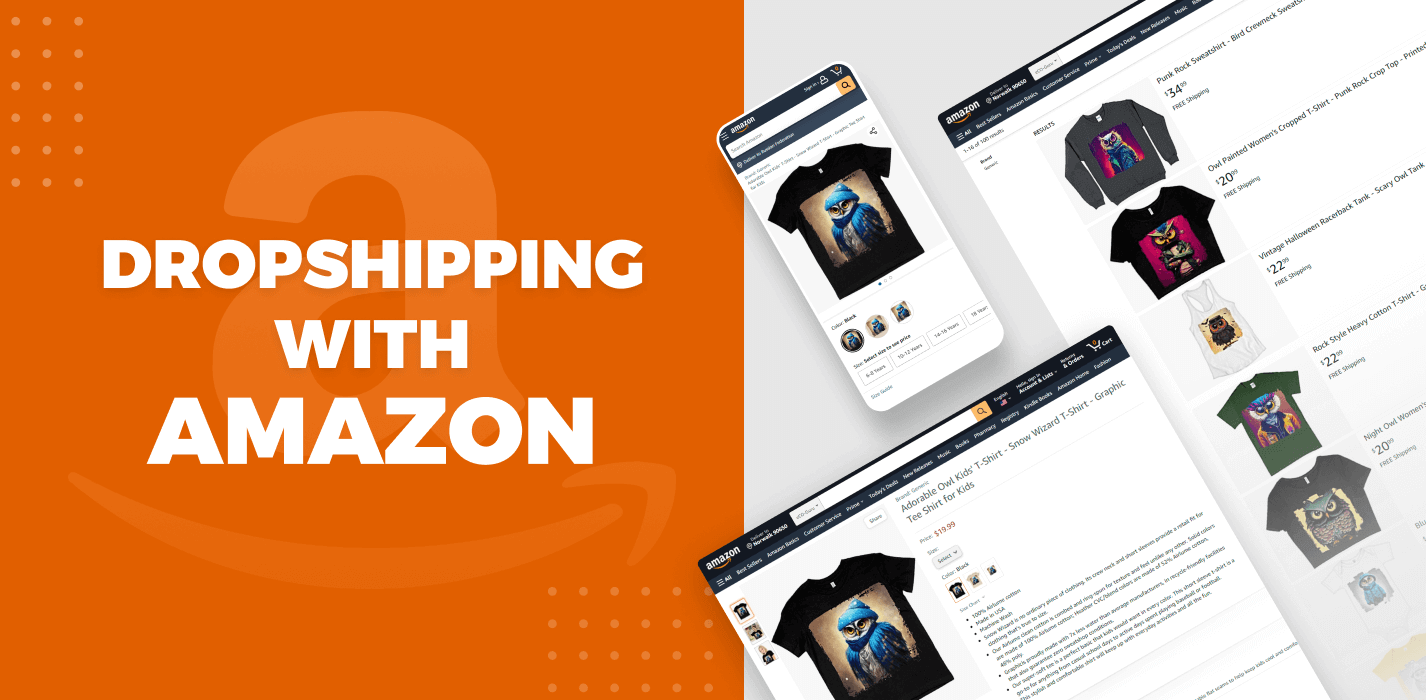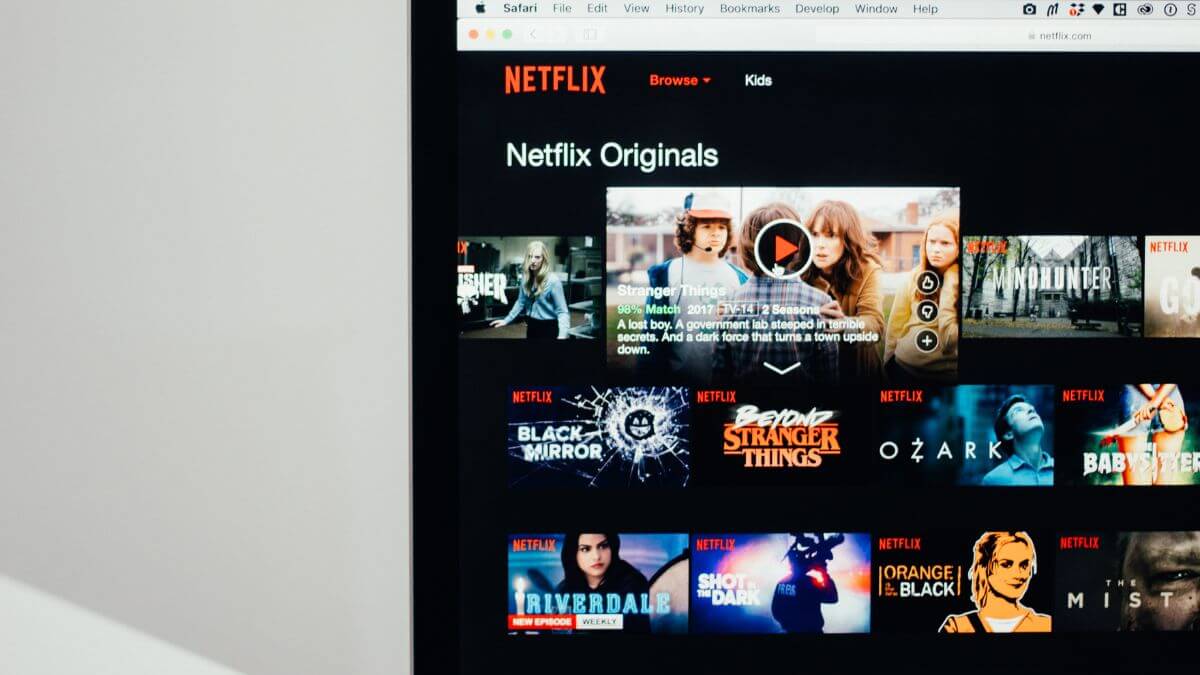About Drop Shopping on Amazon
Dropshipping on Amazon is a business model where a seller lists products for sale on Amazon without keeping any inventory. When a customer places an order for one of these products, the seller purchases the item from a third-party supplier, who then ships it directly to the customer. The seller profits from the difference between the sale price on Amazon and the cost of purchasing the product from the supplier.
This model allows sellers to offer a wide variety of products without the need for large upfront inventory investments. Instead, sellers can focus on marketing and customer service while leaving the logistics of warehousing and shipping to their suppliers.
Specific Rules and Regulations:
Amazon dropshipping is perfectly legal and allowed on the platform as long as you do it correctly, For instance, the seller must ensure that:
- They are identified as the seller on all packing slips and invoices.
- They are responsible for accepting and processing customer returns.
- Their supplier does not include any information indicating they are the supplier of the product.
How Dropshipping on Amazon Works, Along With a Simple Diagram
- Customer Purchase: An Amazon customer finds and purchases a product you’ve listed on Amazon.
- Order Processing: Once the transaction is completed and you receive the funds, you purchase the product from your supplier. During this step, you provide the supplier with the customer’s shipping information.
- Product Shipment: The supplier uses the customer’s information to package and ship the product directly to the customer.

Explanation:
- The customer purchases the product you have listed on Amazon.
- After the sale is completed, you, the seller, use the payment you received to place an order with your supplier.
- The supplier ships the product directly to the customer using the shipping information you provided.
This process allows you to sell products without maintaining inventory, as the supplier handles the storage and shipment of the products. Make sure you adhere to Amazon’s dropshipping policies and guidelines to ensure a smooth and successful operation.
How to Launch a Dropshipping Business on Amazon in Simple Steps
Now that you’ve gained a basic understanding of dropshipping on Amazon, here’s a streamlined approach to launch yourself as a successful dropshipper.
Step 1: Establish Your Amazon Seller Account
First, you’ll require an Amazon seller account to begin your journey. Access sellercentral.amazon.com and Amazon will present you with two types of accounts to choose from: individual or professional.
Step 2: Identify a Product with High Demand and Low Competition
The subsequent step involves pinpointing a product for your Amazon listings.
Utilize a tool such as Jungle Scout’s Opportunity Finder to discover high-demand and low-competition product opportunities. Although you may have your own criteria for selecting products, I suggest starting with the following parameters:
- A sales range of 100-300 units per month
- Competition set to “very low” or “low”
- Average monthly price range of $20-$70
- Niche score of 7 or higher
These conditions should provide you with a multitude of promising product opportunities across various categories.
When you’re new to the field, keeping things straightforward is advisable. Categories such as housewares, sports and outdoors, patio, and home and garden are particularly suitable for beginners due to their low-maintenance nature.
Step 3: Source Dropshipping Suppliers on Alibaba
Once you’ve identified a product to sell, the next crucial step is finding reliable suppliers to fulfill your orders. Alibaba, one of the leading global marketplaces, offers a vast network of manufacturers and suppliers that cater to dropshipping needs.
To source suppliers on Alibaba:
- Conduct a thorough search: Use specific keywords to find suppliers who offer the product you’re looking to sell. Narrow your search with filters such as location, minimum order quantity, and business type (manufacturer or trading company).
- Review supplier profiles: Carefully examine supplier profiles to assess their experience, capabilities, and reviews from previous clients. Look for suppliers with high ratings and positive feedback.
- Verify supplier legitimacy: Ensure the supplier is reputable by checking for verified business licenses, certifications, and compliance with industry standards.
- Communicate clearly: Initiate contact with potential suppliers to discuss terms, pricing, and product specifications. Ask about their production timelines, shipping options, and return policies.
- Negotiate terms: Work out favorable terms with your chosen supplier, including pricing, payment options, and order processing times. Negotiate to achieve the best possible arrangement for your business.
By carefully vetting and establishing relationships with suppliers on Alibaba, you can create a strong foundation for your Amazon dropshipping business and ensure smooth operations.
Step 4: Create an Amazon listing
Once you have a clear product concept and a supplier ready to fulfill orders, your next task is to create an Amazon product listing.
From your Seller Central account, navigate to Inventory > Add a Product. When you reach the Add a Product page, choose “Create a new product listing.”
Begin by selecting the appropriate category for your product. After that, input all the necessary information for your listing.
When determining a price for your dropshipped product, remember to factor in Amazon’s fees. Professional sellers are charged a referral fee of 8-15% depending on the category. Individual sellers face an additional charge of $1.00 per sale.
For a comprehensive understanding of Amazon’s fees by category, refer to the Selling on Amazon fee schedule.
Once you’re satisfied with your listing, you can publish it and start making sales.
Five Tips for Achieving Success in Dropshipping on Amazon
Starting a dropshipping business on Amazon is relatively straightforward compared to other selling methods, but excelling in dropshipping requires extra effort. Here are five tips to help you thrive:
- Boost Your Listing Visibility – To maximize sales, you need to drive traffic to your product listing.
- Utilize Amazon’s internal advertising platform, Amazon Pay-Per-Click (PPC), to place your products higher in search results for specific keywords.
- Enhance visibility through external channels such as Facebook ads, social media, blogging, and email marketing. Although these methods may be more challenging without an existing brand following, they can set you apart from competitors.
- Prioritize Customer Satisfaction – Dropshipping removes many operational hurdles, allowing you to concentrate on customer service.
- Invest time in ensuring customer happiness. Positive interactions lead to favorable product reviews, which are crucial for your Amazon success.
- Emphasize Your Brand – While dropshipping limits your control over product design and development, a strong brand can set you apart.
- Build a compelling brand identity to attract customers. For example, despite a higher price point, YETI dominates the market due to its powerful brand image.
- Test Products with Samples – Before listing a product, order a sample to assess its quality.
- Check how the product arrives and whether it matches descriptions. These details will help you gauge customer satisfaction once you begin dropshipping on Amazon.
- Offer a Diverse Range of Products – With minimal start-up costs, you can afford to experiment with multiple products.
- Test different products simultaneously. Focus on what works well and eliminate underperforming items. Adhering to Amazon’s guidelines, this approach allows you to scale your business while remaining organized and prioritizing customer service and branding.
Pros & Cons of Amazon Dropshipping:
Dropshipping on Amazon offers various advantages over wholesaling, private labeling, and other selling methods on the platform. However, it also comes with its own set of challenges. Here’s an overview:
Pros of Amazon Dropshipping
- Low Initial Investment: Unlike private labeling and wholesaling, dropshipping doesn’t require you to hold your own inventory. After a sale, use a portion of the payment to purchase the product from the supplier, who then ships it to the customer.
- No Storage Costs: Since your supplier handles order fulfillment, you avoid storage fees at Amazon’s fulfillment centers or third-party warehouses.
- Quick Setup: As dropshipping doesn’t require holding inventory, you can start your business rapidly without waiting for inventory to arrive.
- Fully Automated Business: Various apps and plugins facilitate near-total automation of the dropshipping process, allowing you to operate your business with minimal hands-on involvement.
- Amazon Supports Dropshipping: Amazon’s dropshipping policy generally permits this method, provided you adhere to its specific rules and guidelines.
- Accessible Market Research: Dropshipping often involves selling existing products from manufacturers. You can use tools like Jungle Scout to analyze how other sellers of the same product are performing on Amazon.
Cons of Amazon Dropshipping
- High Competition: The low barrier to entry means dropshipping is a competitive space. Others can easily sell identical products, leading to price wars.
- Long Shipping Times: Many dropshipping suppliers are based overseas, which can result in extended shipping times to customers. To mitigate this, seek out local suppliers offering dropshipping.
- Quality Control Challenges: Since products are shipped directly from the manufacturer to the customer, you have limited control over product quality. Long shipping distances also increase the risk of damage during transit.
Consider these pros and cons carefully when deciding whether Amazon dropshipping is the right approach for your e-commerce business.
Is Amazon dropshipping profitable?
Yes, dropshipping on Amazon can be profitable—in fact, 94% of sellers who dropship on Amazon are profitable, according to data from Jungle Scout’s State of the Amazon Seller Report. It all depends on what you source your products for, how much you sell them for, and what’s leftover after Amazon fees.
Remember, dropshipping is just a fulfillment method, and the way you sell products on Amazon will be no different than if you purchased products in bulk. You need to focus on product research (which we’ll talk about below) and finding a supplier who can offer the products you want to sell at a profitable price.
I am Komal Hatwaani, aims to provide readers with informative and engaging content that covers everything from technology and business to entertainment and lifestyle. This website dedicated to delivering high-quality content that informs, entertains, and inspires our readers.
Join us on our journey as we continue to explore the ever-evolving landscape of news and information, providing you with valuable insights and perspectives that enrich your digital experience.











